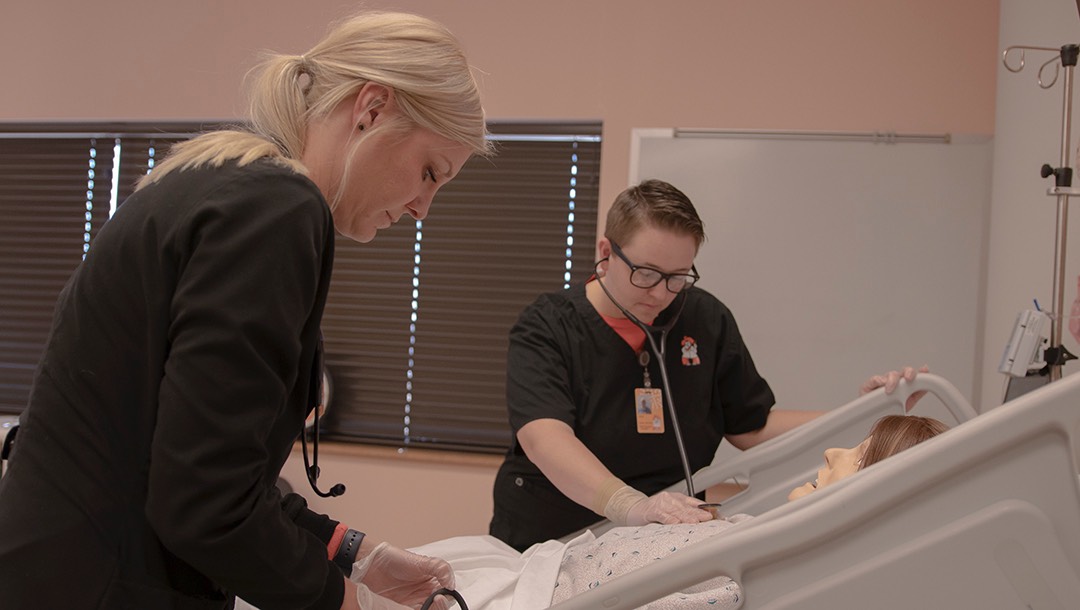
Graduates from OSU Institute of Technology Nursing program received pass rates above the national average from the National Council Licensure Examination-RN (NCLEX-RN) for 2018.
The 2018 pass rate was 91.84 percent, four percent higher than the national average.
The NCLEX-RN is an application and analysis-based test used to test the knowledge learned during nursing school to ensure safety to begin practicing as a nurse. The exam questions vary per student, each could receive anywhere from 75 to 265 questions.
Dr. Jana Martin, dean of the School of Nursing & Health Sciences, credits this success to the attention and resources given to the students by faculty.
“We not only remediate with them while they are in the program, but the students are also assigned a faculty mentor to follow them after graduation to provide them a plan for success on the NCLEX,” said Martin. “Our faculty put a lot of time and resources into the students while they are in the program, we believe our students feel comfortable in coming to the instructor for assistance or guidance when needed.
Preparation begins on day one of the program. With a strict attendance policy, higher grading scale and a clinical partnership, this program is built for those are who serious about a future career. A variety of instructional strategies are used to prepare the students including flipped classrooms, case studies, concept mapping, community presentation and examinations.
“We have an ethical obligation to ensure that examinations and the decisions based on tests are valid, supported by solid evidence, consistent across the program and fair to all students,” said Martin. “Our exam questions are all tied to the nursing process, cognitive level, student learning objectives and NCLEX categories.”
Johnathan Shearer, an OSUIT graduate who took his NCLEX in January of 2018, credits the framework set forth by the instructors as what contributed to his success with the NCLEX.
“Listen to what the instructors are telling you,” said Shearer. “It’s less about testing your knowledge and more about really understanding what the question is asking.”
Shearer was lucky to have the lower end with 77 questions. He said that the instructors really helped break down how the test was administered and how to break down the questions in order to be successful.
“The hardest part of the test is getting over the nerves,” said Shearer. “This test can potentially set the tone for your entire future in this field.”
Nursing programs operate under a multitude of regulation. OSUIT’s program is regulated by three agencies, the Oklahoma Board of Nursing (OBN), Accreditation Commission for Education in Nursing (ACEN) and the Higher Learning Commission (HLC). This intense regulation helps ensure the program remains in compliance with pass, completion and job placement rates.
“Students want to know that when they are applying to and accepted by a program that it is a reputable program,” said Martin. “The last thing students want is to attend a program and incur student loan debt and not be able to graduate or get a job after they graduate.”
Shearer said he has zero regrets about attending and graduating from the Nursing program at OSUIT. “The instruction I received at OSUIT is absolutely invaluable. It’s the best school I’ve ever been to.”
Martin said that continuing high pass rates validates what a great job the faculty is doing. Although she knows there is always room for improvement, this outside assessment states they are on the right track.
